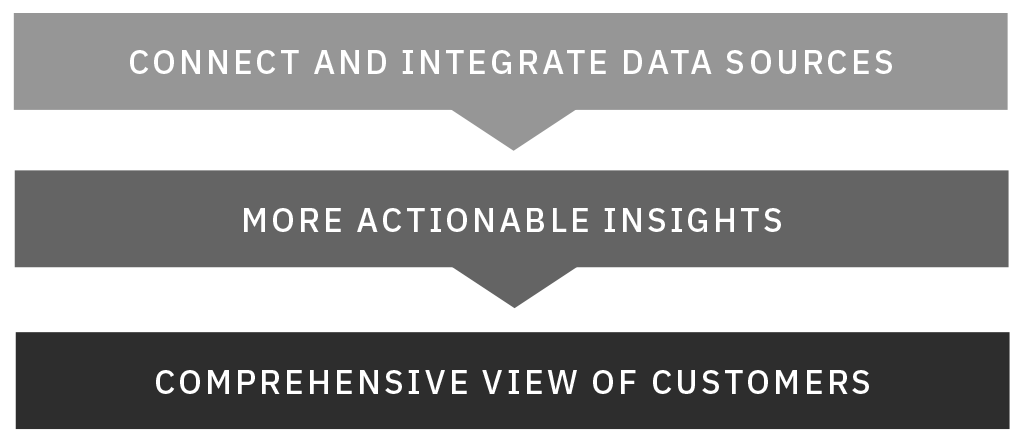In Brief
Across industries, much has been written about consumers’ heightened expectations for their service providers. Today’s financial consumer expects flexibility, seamless technology and exceptional experiences.
Key Takeaways
- Consumer expectations for digital experiences with their financial services institutions are at their highest level and constantly increasing.
- Financial services providers must understand and deliver experiences that speak to the ways various customer segments want to engage with them by investing in omnichannel customer experience management (CXM) strategies that provide personalization and security with a human touch.
- Financial services providers can humanize digital experiences by avoiding jargon and focusing on customer onboarding and education.
As the global economy transitions from height-of-the-crisis conservativism to the cautious optimism of a post-pandemic society, digital transformation remains a hot topic in the financial services space. Venture-capital-backed funding for fintech steadily increased quarter over quarter throughout 2020 (from $1.86 billion in the first quarter of 2019 to $2.55 billion in the fourth quarter of 2020). Similarly, investments in insurance technology in the second half of 2020 increased 64% over the first six months of that year.
These well-funded, disruptive entrants to the market (e.g., Mozper, Gimi, Lunar, Hippo, Lemonade, Next Insurance, etc.) continue to up the ante on their digital offerings, making it more and more difficult for incumbent institutions to keep up. Today, services and products once deemed futuristic are table stakes for financial services businesses looking to carve out their share of an increasingly savvy market (through the lens of products, offerings and technologies).
The rise of online-only banks or neobanks (e.g., SoFi, Ally, Chime, Varo Bank, Marcus by Goldman Sachs, etc.) also spotlights consumers’ increasing preference for digital interactions. This trend has been driven primarily by millennials’ digital nativity along with their ongoing frustration with legacy financial services providers deemed “out of touch.” Generation Z, too, is poised to continue this trend with perhaps even more stringent demand of their financial institutions. Incumbents, in some cases, are managing to get in on the craze (e.g., Marcus by Goldman Sachs), but others, lagging in their digital transformations, are struggling to find a foothold in this new environment.
To meet (or, ideally, exceed) customer expectations, digital experiences in financial services should be accessible, intuitive, simple to navigate, personalized, predictive, consistent across channels and secure.
To meet (or, ideally, exceed) customer expectations, digital experiences in financial services should be accessible, intuitive, simple to navigate, personalized, predictive, consistent across channels and secure.
A Salesforce Research survey found that 80% of participants consider the experience delivered by a company to be as important as its products and services. The same survey found that, among 12 provided sectors, financial services ranked second to last for perceived customer-centricity. In the same vein, a Resonate report cites data that says 86% of U.S. consumers are considering switching banks within the next year, suggesting that consumers are prioritizing price and experience over loyalty. Thus, there is real urgency for financial services providers to provide exceptional digital experiences and accelerate their digital CXM efforts if they are to remain viable in the years to come.
Learn more about how businesses across industries are realizing the return on investment of future-ready digital ecosystems.
Read the e-book
Analyzing Market Research and Customer Attitudinal Data to Personalize Experiences
Beyond their expectations for a secure digital experience with their financial institutions, today’s consumers also want these interactions to be relevant and personalized. In fact, according to Salesforce, 66% of customers believe companies should understand their needs and expectations. Further, a recent study conducted by Mastercard and Harvard Business Review found that 9 in 10 customers expect the businesses they interact with to “know their interests and anticipate their needs.”
With advancements in machine learning and artificial intelligence, financial institutions can better engage their customers by leveraging their vast stores of data. By moving beyond a sole focus on demographic information and expanding their capacities for predictive analytics that decode customer signals (via attitudinal data, market analysis and sentiment analysis), institutions can unlock algorithmic approaches to personalization.
As financial services organizations evolve in their understanding of the customer journey and seek to advance a transformed digital experience, seamless connectivity between business processes — enabled by modern technology — becomes paramount. In addition, this dynamic requires companies to establish and adhere to data governance and stewardship standards, integrate intelligent automation and bring predictive analytics into their customer experience management strategies.
This can be achieved by connecting and integrating data sources (in-house customer data as well as structured and unstructured external data)
Delivering Exceptional Omnichannel Customer Service That Humanizes Digital Experiences
The key to success for financial services organizations lies in ensuring consistency in these personalized interactions for all customer segments regardless of the method or channel they use to engage them. According to Salesforce, 76% of customers expect to get a consistent, frictionless experience regardless of the department or channel with which they interact.
By educating or onboarding customers, financial institutions can help bridge the financial literacy gap that exists for many individuals, especially high-value demographics like millennials.
High-quality in-person experiences are also important to a successful omnichannel strategy. Gina Bhawalkar, principal analyst and co-author of Forrester’s 2020 U.S. Banking Customer Experience Index report, says that banks should not create experiences that are solely digital, because when customers have serious concerns or are in an emotional state, they still want to be able to connect with an actual human. Research conducted by Capgemini in 2018 likewise found that 45% of consumers prefer human-only interactions when making major (high-consideration) financial decisions.
All that to say, businesses need to understand their customers in order to offer them the personalized experiences, services and solutions that make sense for them regardless of how they interact with the institution. For example, if a customer checks out an offer for a personal loan on a bank’s website and then calls customer service for more information, the individuals on the phone should be able to track that customer’s journey to eliminate redundancies in the process and streamline their experience.
Further, businesses should also consistently create easy-to-navigate, frictionless experiences that empower their customers to confidently take control of their own financial management. A National Endowment for Financial Education report states that only 24% of this generational subgroup demonstrates basic financial literacy. By educating or onboarding customers, financial institutions can help bridge the financial literacy gap that exists for many individuals, especially high-value demographics like millennials.
Enhancing Transparency and Cybersecurity to Foster Digital Trust
As customer experience and financial services in general trend toward digital applications, trust, transparency and security have been thrust into the spotlight.
Open banking and banking-as-a-service (BaaS) regulations outside the United States hold the promise of increased transparency in the financial services industry. They allow third parties heightened access to legacy institutions’ application programming interfaces (APIs), financial data and infrastructures in order to develop new white-label products, technologies or digital services.
The United Kingdom and several other countries have already embraced open banking regulations (Payment Services Directive 2), and many others seem poised to follow suit in the coming months and years. Banks in the U.S. can get ahead of the competition by embracing the principles of open banking today, in the interim before it becomes mandated.
This trend unlocks new opportunities for financial services providers to retain existing clients, provide new services and build new revenue pipelines while also delivering on their consumers’ expectations. In addition, this evolution brings new entrants and entices legacy institutions to build new relationships with fintechs and other disruptive startups. In a recent survey, Finextra and the Euro Banking Association found that 81% of banking executives believe a robust partnership strategy to be the most effective method for achieving their digital transformation objectives.
At the same time, this shift also brings with it an increased potential for security breaches and other activities that might degrade consumers’ trust. Machine learning and artificial intelligence can help financial services providers improve their security and prevent significant losses. As open banking becomes more prevalent and digital experiences become the new norm, financial services institutions must ensure their security protocols are stronger than ever to mitigate the operational and reputational risks that come with cybersecurity breaches.
The bottom line is that digital customer experience management should be top of mind for financial services providers today. As demonstrated by the COVID-19 pandemic, consumer preferences for how they interact with businesses are shifting. Institutions that capitalize on this momentum now will reap the benefits of being a first mover in the years to come. Those that lag behind may fail to recover.
KEY TAKEAWAYS
-
Think differently.
Remember that as digital experiences become more common, transparency and cybersecurity will likewise increase in importance for consumers. -
Plan differently.
Prioritize the development of a consistent, frictionless omnichannel customer experience that emphasizes digital interactions, but does not forgo in-person activities altogether. -
Act differently.
Leverage artificial intelligence and machine learning to analyze customer attitudinal data that provides more effective insights than traditional demographic information.

